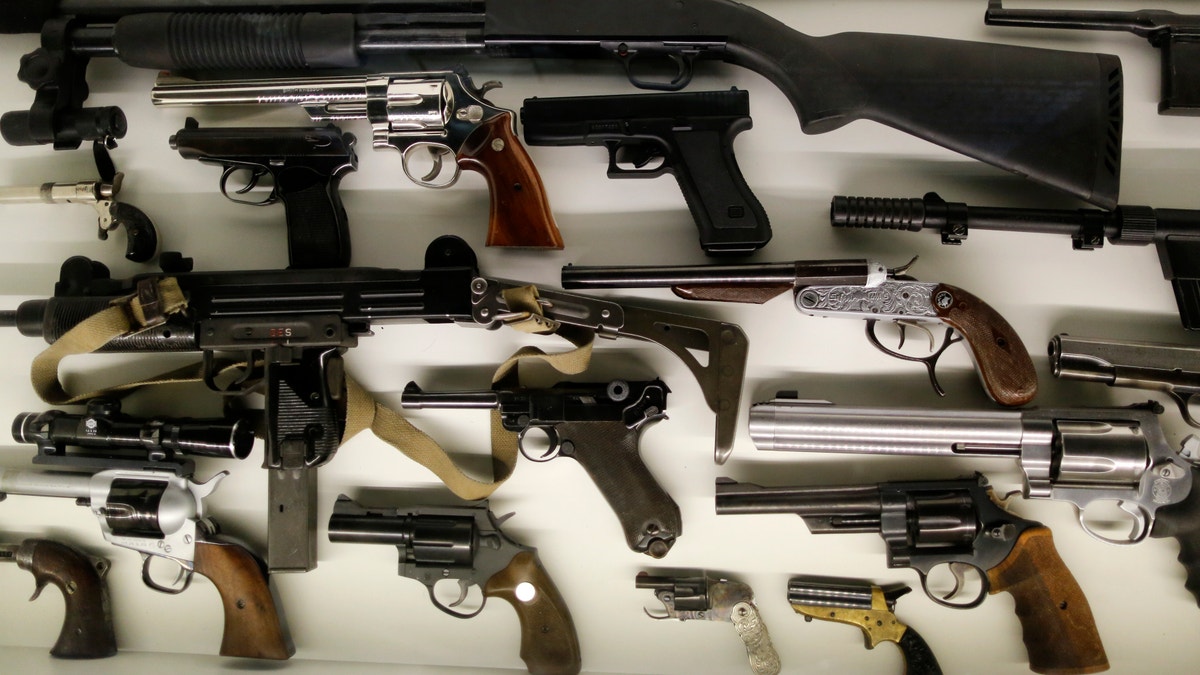
Different kinds of arms are seen on display at the 'Top Secret' Spy Museum in Oberhausen, July 10, 2013. (Reuters)
As school shootings become more common in the U.S., they're happening less often in states with mandatory background checks on gun and ammunition purchases, a recent study suggests.
While rare, these shootings are now happening more than once a week, compared with less than once a year a generation ago, researchers report in the journal Injury Prevention.
"Overall, there is a huge leap in recent incidence of school shootings," said lead study author Dr. Bindu Kalesan, a researcher at Boston University. "Too many guns available easily may be one of the factors, but there may be several other social factors as well."
Gun violence kills roughly 33,000 people and injures another 81,000 every year in the U.S, the study authors write.
The Sandy Hook Elementary school shooting in 2012, where 20 children and 6 staff were shot dead by a lone gunman, prompted an intense national debate about the factors that contribute to gun violence and the best prevention approaches.
To assess how factors like mandatory background checks passed by U.S. states have influenced school shooting rates, researchers analyzed media coverage of incidents from 2013 through 2015.
Among other things, researchers looked for the presence or absence of mandatory background checks for all gun and ammunition purchases; the extent of gun ownership; mental health expenditure per capita; spending on public school education for kindergarten through high school; and the proportion of people living in towns and cities.
In total, there were 154 school shootings between 2013 and 2015, rising to 35 in 2013, to 55 in 2014, and to 64 in 2015. This amounts to more than one shooting a week.
By comparison, there were a total of 44 school shootings from 1996 to 2008 - equivalent to around one a year, the authors note.
During the three-year study period, 39 states had at least one school shooting, while 11 had none: Alaska; Connecticut; Hawaii; New Hampshire; New Jersey; New York; North Dakota; Rhode Island; Vermont; West Virginia; and Wyoming.
Five states had more than 10 shootings during the study period: Florida, Georgia, North Carolina, Tennessee and Texas, where the numbers were 14, 15, 12, 10 and 14 shootings, respectively.
Overall, 84 people, including 27 perpetrators died, and another 136 were injured. Most of the shootings were intentional and perpetrated by men.
Researchers lacked data on a lot of factors that can influence gun violence, but they did find fewer school shootings occurred in states with mandatory background checks and higher spending on mental health and education.
One limitation of the study is its reliance on news coverage of shootings for data used in the analysis, which might not offer a complete picture of every incident or include every shooting, the authors note.
They also had no way to determine the mental state or access to health care for perpetrators in these shootings.
"Mental health problems can increase the risk of both perpetration and victimization from violence, including weapon-related violence," said Dr. Rashmi Shetgiri, a pediatrics researcher at the David Geffen School of Medicine at the University of California, Los Angeles.
"Mental health interventions have been shown to reduce involvement in aggressive and violent behavior among children and adolescents," Shetgiri, who wasn't involved in the study, said by email. "Investment in mental health services, therefore, could be beneficial for preventing violence and for dealing with the consequences of exposure to weapon violence."
